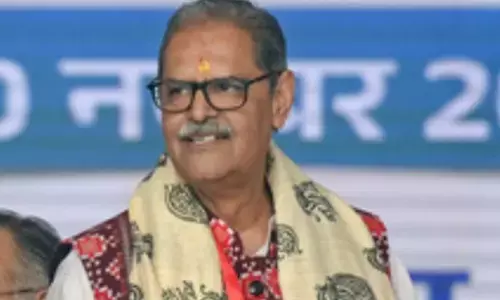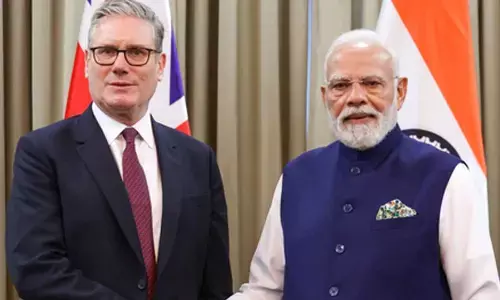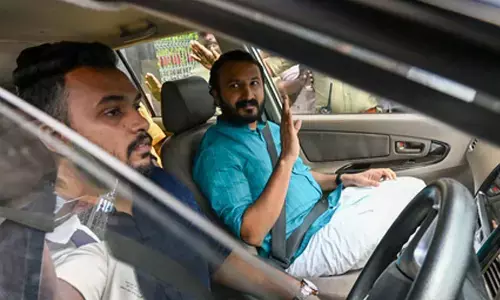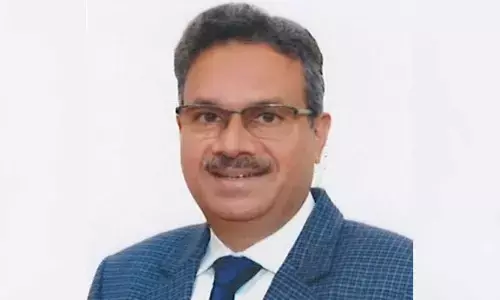Positive action, panacea for all illness

Apropos the article by Sneha Rajaram with the title, “Understanding mental illness on 15 May
Apropos the article by Sneha Rajaram with the title, "Understanding mental illness on 15 May, I would like to pose certain pertinent questions such as…Are we true individuals…or do we all conform?
What makes us understand our true self? How can we really catch up the devout concept of 'know thyself'?
Questions like these underpin the work of the world's major thinkers and experimenters in the fascinating field of psychology.
The fact that human thinking and behaviour is unpredictable is aptly explicated in the article by saying "The goings-on in our inner worlds are mostly unknown, even to us, and our internal reality is fragmented."
Without a doubt, we live in an uneven, unintegrated, unintegrable world. Even if we go back to the yesteryears, the post-colonial Indian society presents a complex configuration of diverse entities in a seemingly unified polity.
Its strength lies in its rich diversity with an ability to unify the disparate strands. In the absence of an integrating power, it is vulnerable to internecine disturbances.
On the one hand, Indians have made very impressive strides in certain areas like strengthening of democratic institutions, agriculture, science and technology, defence, Human Resource Development, and economy.
On the other hand, Indian society is ridden by a host of problems and challenges like communalism, casteism, gender discrimination, corruption, favouritism, nepotism, criminalisation of politics, population explosion, excessive urbanisation, consumerism, changes in lifestyles, extremist violence, unemployment, poverty, inadequate healthcare and insurgency.
Unlike the American society, which acquired over a period of time a distinctly American character in the process of fusing all the migrated cultures as if in a melting pot, in Indian social structure diverse religious, ethnic, political, economic and linguistic identities co-exist as in a salad bowl.
In the absence of the evolution of a pan-Indian character and identity, frictions and maladjustments have led to frequent disturbances to the peace and harmony among the different sections of the people.
There are several divided identities in the salad bowl: religion-wise, caste-wise, language-wise, region-wise, economy-wise, gender-wise and last but not the least, education-wise.
More important than anything else, politically speaking, Indians are divided into the people of centre, left centre, right centre, left, right, extreme left, and extreme right, etc.
Who can expound and illuminate the goodness of these divisions ending in the suffix „"wise to be wise or unwise?
A society is a system in which people live together in organised communities having shared customs and laws. The strength of a society is drawn from the cohesiveness among the different sections.
If the members share common values, customs and laws, the society as a whole lives in peace and harmony. Isn't it true that the Indian society lacks homogeneity because different sections have different value systems that keep them apart?
In the absence of shared value systems, the different sections of the society fall apart. When these value systems are provoked to conflict with one another there is violence, hatred and intolerance. This is the picture of the Indian society.
Connoisseurs proclaim that a society is like a complex living organism with different sections being interconnected and interrelated.
The healthy functioning of a society depends upon maintaining a dynamic balance in the interrelatedness of the different parts. Any maladjustment or malfunctioning will upset the balance leading to tensions and conflicts.
In the ancient times the Indian society was largely homogeneous with a clearly defined structure and harmonious relations among the different sections by following a well-defined and well-devised code of conduct.
As the society became more and more pluralistic and as the performance of the duties deviated from the accepted norms, society came to experience a great deal of friction leading to violence and disharmony.
It is in such a situation that appropriate reformative measures need to be taken to restore harmony and balance.
One of the duties of the government is to take appropriate action that ensures peace and harmony in the society. Corrective reformative action is also sometimes taken by individuals and Non-Governmental Organisations (NGOs).
It was when after a long period of foreign rule Indian society was losing the central energy to hold all the parts together in a state of healthy balance that reformers like Dayananda Saraswati and Swami Vivekananda initiated reformist action to revitalize the society.
Later under the leadership of Mahatma Gandhi social awakening became a part of the agenda for national liberation.
Do we have such leaders today? Of course, every age has its heroes but unfortunately, every house has got a blacksheep.
In India today, there is no dearth of black-sheep though there are good number of heroes. Here is the crux of all our problems and we need a panacea for all illnesses.
Should we and our next generation live the next seventy or more years like the last seventy years after we got our independence?
India obtained freedom by paying a heavy price in the form of partition on the basis of religion. This religious divide continues to keep the different sections of Indian society apart, and in a fractured state of hostility and suspicion.
The peace and harmony in Indian society is largely dependent on an effective bridging of the communal divide by promoting a spirit of tolerance, understanding and respect for the human.
A culturally activistic agenda should be able to grapple with the stubborn issue of communalism. This is the contemporary reality which has triggered several responses from intellectuals, social activists and creative writers.
The hierarchical structuring of our "native society‟ needs to be rearranged in a systemic way so that all the parts are of equal importance for the whole to function in a state of harmony and dynamic balance.
The corrective measures taken by the government are to relate to the empowerment of the weaker sections so as to restore the harmonious functioning of the system.
The issue of reservations, which is solely intended for social justice, is unfortunately being politicised.
In addition to the effective implementation of the Reservation Policy, several socio-cultural and humanitarian programmes are needed to minimize inter-caste friction and generate goodwill and harmony.
Another aspect of the contemporary social reality is the practice of discrimination against women. In the earlier period when the societal concerns were governed by a well-defined set of values, women were treated with great respect.
In the Upanishadic period, women joined men in their search for the ultimate truth. Rishis like Gargi and Maithreyi were as well informed as their male counterparts.
Though the social scenario is slowly changing in favour of the empowerment of women, instances of male domination in different forms like sexual harassment, rape, and dowry deaths are capturing the headlines in the mass media every day.
It is at the family level that individuals experience the impacting of problems of cultural divisiveness and caste-gender discriminations as well as a host of other factors like poverty, illiteracy, unemployment, social inequality and excessive urbanization.
The words of Sneha Rajaram in her article, "When equality and heterogeneity can go together, when the different parts of our world and ourselves can relate to each other better without the need for dominance and control, then we will have achieved integration in its truest sense" are indeed true and praise-worthy.
The panacea for all our societal problems lies not only in the society's positive thinking but also in its "positive action…
(The writer is a Guinness, Asia, Limca, India & Telugu Book record holder & life skills mentor)
















